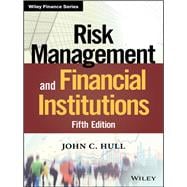The most complete, up-to-date guide to risk management in finance
Risk Management and Financial Institutions, Fifth Edition explains all aspects of financial risk and financial institution regulation, helping you better understand the financial markets—and their potential dangers. Inside, you’ll learn the different types of risk, how and where they appear in different types of institutions, and how the regulatory structure of each institution affects risk management practices. Comprehensive ancillary materials include software, practice questions, and all necessary teaching supplements, facilitating more complete understanding and providing an ultimate learning resource.
All financial professionals need to understand and quantify the risks associated with their decisions. This book provides a complete guide to risk management with the most up to date information.
• Understand how risk affects different types of financial institutions
• Learn the different types of risk and how they are managed
• Study the most current regulatory issues that deal with risk
• Get the help you need, whether you’re a student or a professional
Risk management has become increasingly important in recent years and a deep understanding is essential for anyone working in the finance industry; today, risk management is part of everyone's job. For complete information and comprehensive coverage of the latest industry issues and practices, Risk Management and Financial Institutions, Fifth Edition is an informative, authoritative guide.








